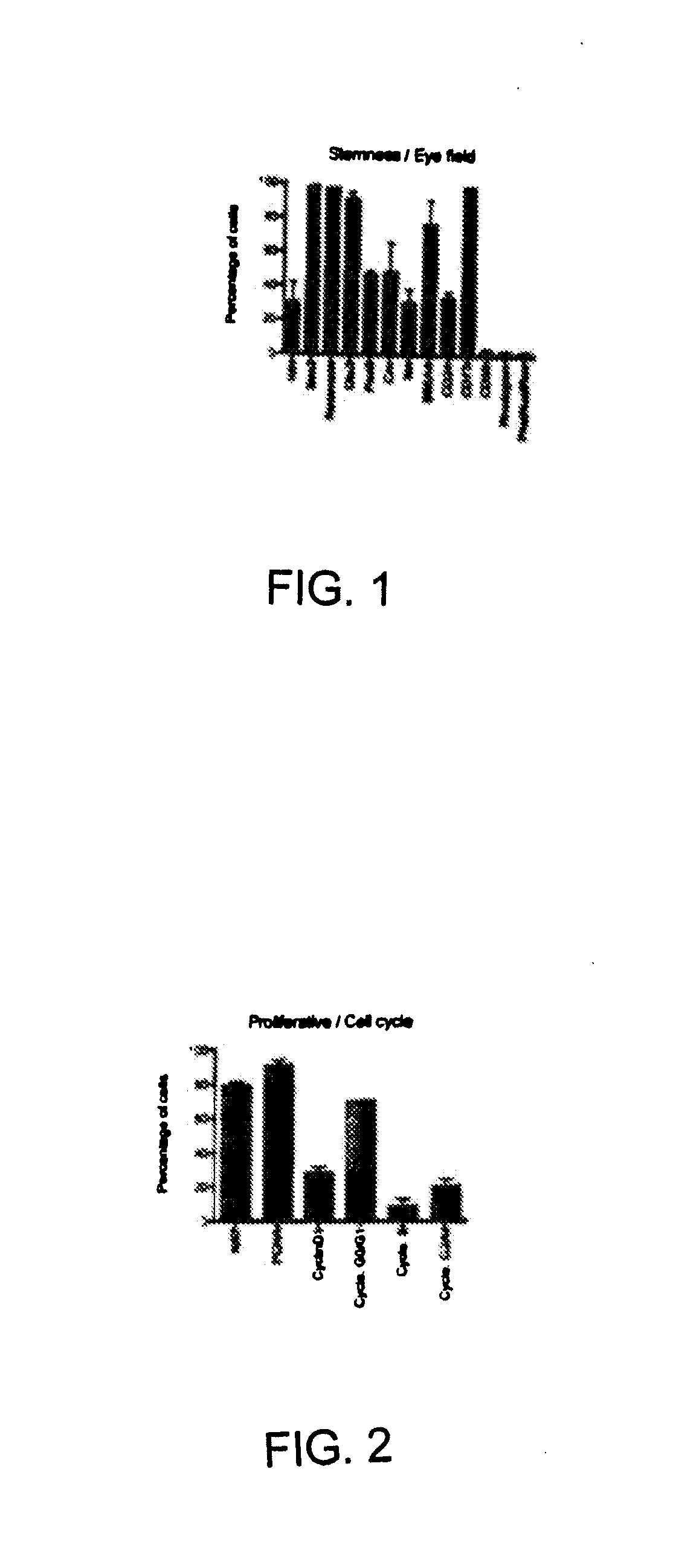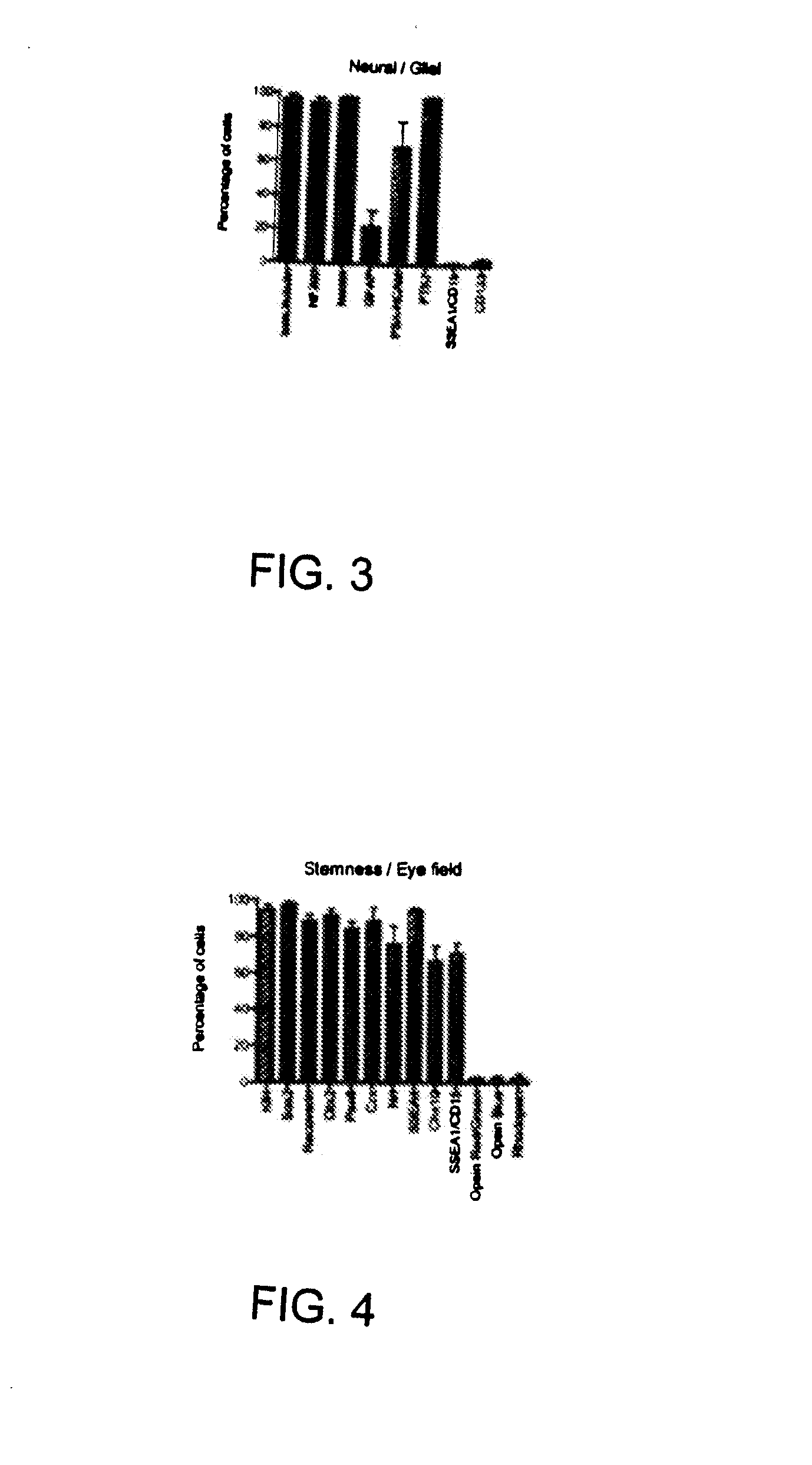Phenotype profile of human retinal progenitor cells
a progenitor cell and human retina technology, applied in the field of human retinal progenitor cells, can solve the problems of permanent visual loss, affect millions of people worldwide, and the intrinsic regenerative capacity of the human retina is extremely limited
- Summary
- Abstract
- Description
- Claims
- Application Information
AI Technical Summary
Benefits of technology
Problems solved by technology
Method used
Image
Examples
examples
Retina Morphology
[0067]The morphology of the neural retina which is the subject of this invention is further described in commonly assigned co-pending U.S. application Ser. No. 13 / 160,002, filed Jun. 14, 2011, the full disclosure of which is incorporated by reference herein.}.
Cell Isolation
[0068]hRPCs (human retinal progenitor cells) were isolated from fetal retinas as described, with small modifications, in the following references: Klassen, H. J. et al., Multipotent Retinal Progenitors Express Developmental Markers, Differentiate into Retinal Neurons, and Preserve Light-Mediated Behavior, Invest. Opthalmol. Vis. Sci., 2004, 45(11), pages 4167-4173; Klassen, H. et al., Isolation of Retinal Progenitor Cells from Post-Mortem Human Tissue and Comparison with Autologous Brain Progenitors, J. Neuroscience Research, 2004, 77(3), pages 334-343; Klassen, H. et al., Progenitor Cells from the Porcine Neural Retina Express Photoreceptor Markers after Transplantation to the Subretinal Space of...
PUM
 Login to View More
Login to View More Abstract
Description
Claims
Application Information
 Login to View More
Login to View More - R&D
- Intellectual Property
- Life Sciences
- Materials
- Tech Scout
- Unparalleled Data Quality
- Higher Quality Content
- 60% Fewer Hallucinations
Browse by: Latest US Patents, China's latest patents, Technical Efficacy Thesaurus, Application Domain, Technology Topic, Popular Technical Reports.
© 2025 PatSnap. All rights reserved.Legal|Privacy policy|Modern Slavery Act Transparency Statement|Sitemap|About US| Contact US: help@patsnap.com



